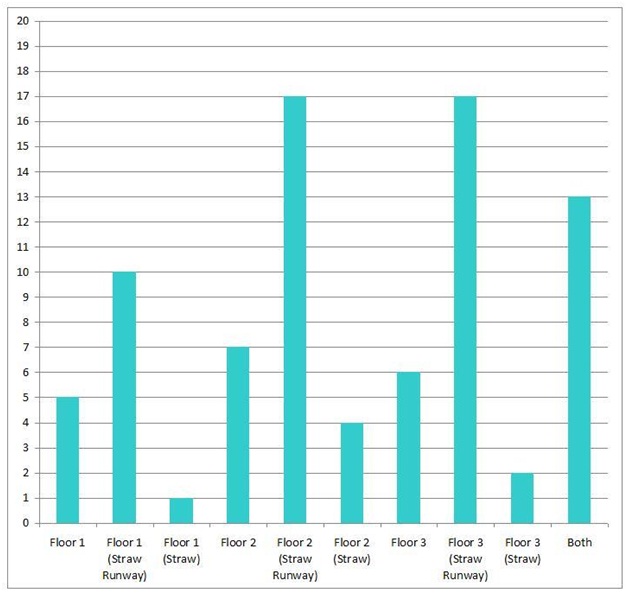





Published on Feb 13, 2025
The objective: To determine the effect of friction of different surfaces on the distance travelled by a vehicle powered by a balloon.
You can’t do anything without friction. Friction is more important than eating. Here, my name is Justin and I’m going to talk about the types (kinds) of friction, the definition of friction, how does friction works, how can friction helps you, how can friction causes a problem, how to create less friction, and the things that will happen if there is no friction.
There are many types of friction. Some types are static, rolling, kinetic, sliding, and fluid frictions. Static friction is the friction that is much more powerful than sliding friction and makes it hard to budge an object that isn’t moving, like a heavy box on the floor. Rolling friction occurs when two objects move relative to each other and one rolls on the other. Kinetic friction occurs when two objects are moving relative to each other and rub together. Sliding friction occurs when two objects are rubbing against each other. Fluid friction is the friction between a solid object as it moves through a liquid or gas medium.
Friction is the force that holds object in motion back. Friction works when two objects rub together or when you press two surfaces together. Friction can help you by giving you grip so you can walk. It also helps you with driving a car on the road, using your bicycle brake to slow down or stop, making fire by rubbing two sticks, or pick up things.
Although friction helps you, it sometimes causes a problem. Here are some problems that can happen:
1. It can cause damage to devices.
2. Too much friction can make heavy objects hard to move.
3. Too much friction can also wear things down.
To create less friction, you need to cover moving objects with a slippery liquid called lubricant, such as oil, and water. You can use devices such as wheels to create less friction.You can also create less friction by skiing down on the snow and the sand. Snow and sand are both slippery enough to ski down because they are made of small grains that slide past each other.
You need friction to do a lot of things. Without friction, you can’t do anything. For example, walking would be impossible without friction. If there were no friction between your feet and the ground, your shoes wouldn’t grip and you’d slip with every step. You also can’t drive a car on the road, or pick up things like a ham sandwich without friction.
In conclusion, I think the friction is the most important thing because you need friction for everything such as walking. Even it causes a problem, it helps you with a lot of things
The purpose is to find out which surfaces and conditions create the least friction and make the balloon car move the farthest.
I think the balloon car with straws that moves on the straw runway will create the least friction and move the farthest.
• Lightweight cardboard box (like a shoebox)
• Balloon
• Scissors or a box cutter (ask an adult to help you!)
• Box of plastic drinking straws
• Tape measure or ruler
• Glue or clear scotch tape
• Notebook
• Pencil or pen
1. Have an adult help you cut a small hole in one end of the cardboard box.
2. Insert the balloon through the hole so that the head of the balloon is inside the box and the opening is outside.
3. Blow up the balloon and twist the end closed, pinching it between your fingertips. Do not tie it off.
4. While still pinching the balloon closed, set the balloon car on a flat countertop, table, or floor and mark the starting point.
5. Let go of the balloon and measure the distance the box traveled.
6. Repeat inflating the balloon to the same size, let it go, and measuring the distance travelled on difference surfaces. Good surfaces to test are carpets or rugs, concrete (like the sidewalk), and on dirt or grass.
7. Go back to the first flat surface tested, and lay out a row of parallel straws about 3 feet long.
8. Inflate the balloon, mark the starting point, and set the balloon car on top of the straw runway.
9. Release the balloon. Measure and record the distance travelled.
10. Repeat Step 8 on the different surfaces you tried in Step 6.
11. Glue or tape two straws along the length of the bottom of the box like a sleigh.
12. Inflate the balloon, mark the starting point, and release the balloon car across the surfaces that were tested before.
13. Inflate the balloon, mark the starting point, and release the balloon car across the straw runway.
14. Analyze your results from the experiment.

In conclusion, my hypothesis was practically right. The balloon car with two straws on the straw runway travelled more than the balloon car on the regular floor, and the balloon car with only two straws, but travelled less than the balloon car on the straw runway. I found that the straws on the balloon car slowed down the balloon car.
<http://www.askanexpert.com/> Design, Nonstop. Ask an Expert, ©2014 Jurock Publishing
http://www.ask.com/question/how-does-a-pulley-make-work-easier> Ask.com, © 2014 Ask.com
http://www.ehow.com/about_6367453_do-pulleys-make-work-easier_.html>johnmcgee, eHow Contributor. eHow, 1999-2014 Demand Media, Inc.
http://www.youtube.com/watch?v=uv7_4ub76xY&list=UUT22dav7hzRevfME_l8BawQ